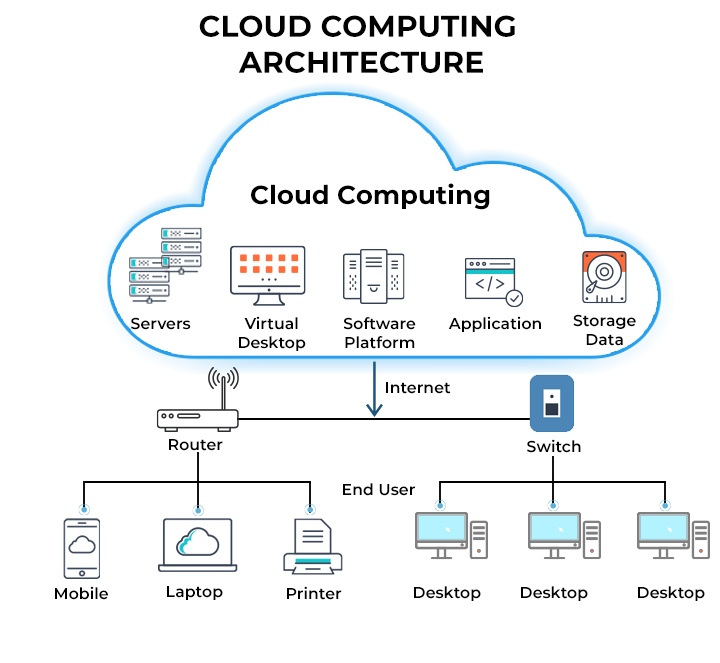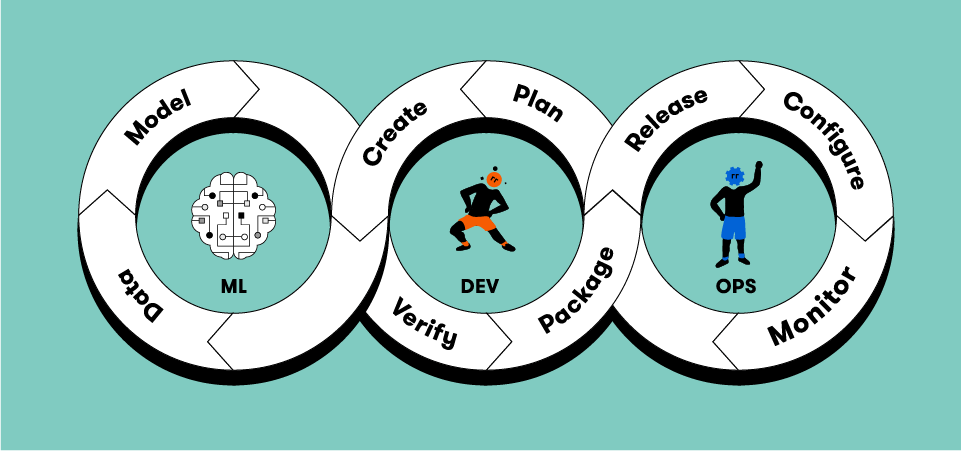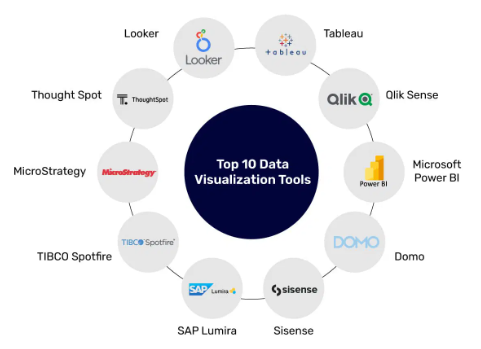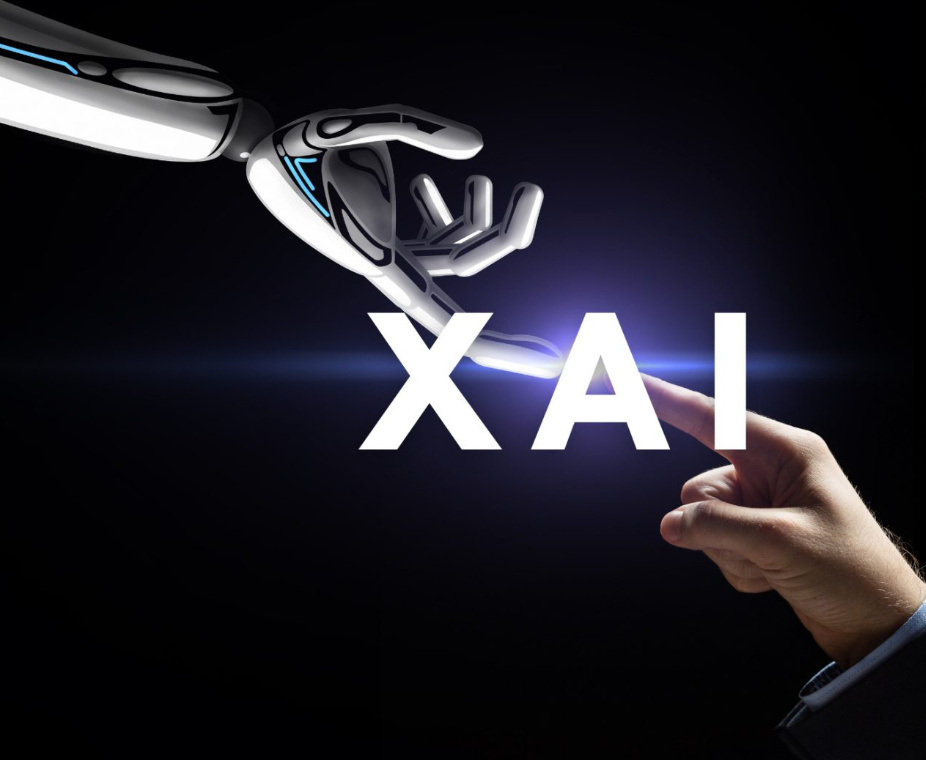Level Up Your Data Game: The Must-Have Skills to Crush It as a Data Scientist in 2025
Alright folks, gather ‘round the digital campfire! Let’s talk about the wild and wonderful world of data science. It feels like just yesterday we were all scratching our heads trying to figure out what a “Big Data” even was. Now, it’s woven into the fabric of pretty much everything, from the apps on our phones to the decisions made by giant corporations.
And guess what? The game ain’t slowing down. In fact, it’s speeding up faster than a runaway train fueled by… well, data! So, if you’re dreaming of being a data whiz in 2025, or if you’re already in the trenches and want to stay ahead of the curve, you’ve landed in the right place. We’re gonna break down the skills you absolutely NEED in your toolkit to not just survive, but THRIVE as a data scientist a couple of years down the line.
Forget the super formal jargon for a sec. We’re talking real-world skills that’ll make you the go-to person for unlocking insights from all that juicy data floating around. Think of it like packing your backpack for an epic trek through the data landscape — you gotta have the right gear to make it to the summit.
So, buckle up, grab your favorite beverage, and let’s dive into the essential skills that will make you a data science rockstar in 2025!

The Holy Trinity: Programming, Math, and Stats (Still Your Best Buddies)
No matter how fancy things get, some fundamentals remain, well, fundamental. These are the bedrock upon which all your other data science superpowers will be built.
1. Python: The King (Still Reigns Supreme)
Seriously, if you’re not friends with Python yet, it’s time to make some introductions. This language is like the Swiss Army knife of data science. It’s versatile, relatively easy to learn (though mastering it is a journey!), and has an absolutely massive ecosystem of libraries that cater to pretty much every data-related task you can imagine.
- Why it’s crucial in 2025: Think about it — machine learning frameworks like TensorFlow and PyTorch? Python. Data manipulation powerhouses like Pandas and NumPy? Python. Statistical analysis with SciPy? Yep, Python. Even visualizing your findings with Matplotlib and Seaborn leans heavily on our Python pal. It’s the lingua franca of the data science world, and that’s not changing anytime soon.
- What to focus on: Don’t just learn the basics. Get comfortable with object-oriented programming, understand data structures, and really dive deep into those key libraries. Knowing how to write clean, efficient, and readable code is a game-changer when you’re collaborating with others (which you’ll be doing a lot!).
2. SQL: Talking to Databases Like a Pro
In a world drowning in data, most of that precious information still lives in databases. SQL (Structured Query Language) is your key to unlocking that vault. It’s the standard language for managing and retrieving data from relational databases.
- Why it’s crucial in 2025: No matter how sophisticated your machine learning models get, you’ll almost always need to pull data from somewhere. Understanding SQL allows you to efficiently extract, filter, and join data — the essential first steps in any data science project. Plus, with the rise of cloud-based data warehouses, SQL skills are more relevant than ever.
- What to focus on: Master the basics of querying, filtering, joining tables, and aggregating data. Understanding different types of SQL commands and how to optimize your queries for speed will make you a much more effective data scientist. Bonus points if you’re familiar with specific database systems like PostgreSQL, MySQL, or cloud-based alternatives.
3. The Power Duo: Mathematics and Statistics (Your Analytical Compass)

Data science isn’t just about writing code; it’s about understanding the underlying principles that govern the data. That’s where mathematics and statistics come in.
- Why they’re crucial in 2025: These aren’t just dusty old subjects you learned in school. A solid grasp of statistics helps you understand the significance of your findings, identify patterns, and build robust models. Mathematics, particularly linear algebra and calculus, underpins many machine learning algorithms. Knowing the math helps you understand how these algorithms work, not just how to use them. This deeper understanding allows you to troubleshoot issues, choose the right models, and even develop new ones.
What to focus on:
- Statistics: Get comfortable with hypothesis testing, different types of distributions, regression analysis, probability theory, and Bayesian thinking. Understanding concepts like bias and variance is crucial for building reliable models.
- Mathematics: Focus on linear algebra (vectors, matrices, matrix operations) as it’s fundamental to many machine learning algorithms. A basic understanding of calculus (derivatives, optimization) will also be incredibly helpful, especially when diving into deep learning.
Leveling Up Your Machine Learning Game
Machine learning is no longer a niche area; it’s becoming a core component of many data science roles. You don’t need to be a PhD in AI, but having a solid understanding of the principles and practical application of machine learning is essential.

4. Machine Learning Mastery (Beyond the Basic Algorithms)
Knowing how to import a model from scikit-learn is a good start, but in 2025, you’ll need to go deeper.
- Why it’s crucial in 2025: The demand for sophisticated AI-powered solutions is only going to grow. This means you’ll need to be comfortable with a wider range of algorithms, understand their strengths and weaknesses, and know when to apply them. Plus, the ability to fine-tune models and evaluate their performance effectively will be highly valued.
- What to focus on:
- A Broad Understanding of Algorithms: Go beyond the basics like linear regression and decision trees. Explore more advanced techniques like support vector machines, ensemble methods (random forests, gradient boosting), and clustering algorithms.
- Model Evaluation and Selection: Learn how to properly evaluate model performance using various metrics, understand the trade-offs between different metrics, and choose the best model for a given problem. Cross-validation is your friend!
- Feature Engineering: This is often where the real magic happens. Learn how to create new, informative features from your raw data that can significantly improve model performance. This requires a good understanding of the data and the problem you’re trying to solve.
5. Diving into the Deep End: Deep Learning and Neural Networks
While not every data scientist needs to be a deep learning expert, having a solid understanding of the fundamentals and when to apply these powerful techniques is becoming increasingly important.

- Why it’s crucial in 2025: Deep learning has revolutionized fields like image recognition, natural language processing, and speech recognition. As these areas continue to grow, so will the demand for data scientists who can leverage deep learning techniques.
What to focus on:
- Fundamental Concepts: Understand the basics of neural networks, different types of layers (e.g., convolutional, recurrent), activation functions, and backpropagation.
- Deep Learning Frameworks: Get hands-on experience with popular frameworks like TensorFlow and PyTorch. Knowing how to build, train, and deploy neural network models using these libraries is key.
- Specific Applications: Explore areas like Convolutional Neural Networks (CNNs) for image data and Recurrent Neural Networks (RNNs) or Transformers for sequential data like text.
6. The Language of Text: Natural Language Processing (NLP)
We live in a world of text data — social media posts, customer reviews, articles, emails, and more. The ability to extract meaningful insights from this unstructured data is a massive opportunity.
- Why it’s crucial in 2025: Businesses are increasingly looking to understand customer sentiment, automate text-based tasks, and build intelligent applications that can interact with humans in a natural way. NLP skills will be highly sought after.
- What to focus on:
- Core NLP Techniques: Understand concepts like tokenization, stemming, lemmatization, part-of-speech tagging, and named entity recognition.
- Text Representation: Learn about different ways to represent text data for machine learning models, such as bag-of-words, TF-IDF, and word embeddings (Word2Vec, GloVe, FastText).
- Advanced NLP Models: Familiarize yourself with transformer models like BERT, GPT, and their applications in tasks like text classification, sentiment analysis, machine translation, and question answering.
Wrangling the Beast: Data Handling and Infrastructure
Data doesn’t magically appear in a clean, ready-to-use format. A significant portion of a data scientist’s time is spent dealing with the messy reality of data.
7. Data Wrangling and Manipulation: Taming the Chaos
Being able to clean, transform, and reshape data is a fundamental skill that often gets overlooked but is absolutely critical for successful analysis and modeling.
- Why it’s crucial in 2025: The volume and variety of data are only increasing, and raw data is rarely perfect. You’ll need to be a master at identifying and handling missing values, dealing with inconsistencies, transforming data into the right format, and merging different datasets.
- What to focus on: Become proficient with libraries like Pandas in Python for data manipulation. Learn efficient techniques for filtering, grouping, merging, and reshaping dataframes. Understanding different data formats (CSV, JSON, SQL databases) and how to work with them is also essential.
8. Big Data Technologies: Handling the Massive Volumes
While not every project involves petabytes of data, understanding how to work with large datasets is becoming increasingly important as data volumes grow.

- Why it’s crucial in 2025: Many organizations are generating and collecting massive amounts of data. Knowing how to leverage big data technologies allows you to process and analyze this data at scale.
- What to focus on: Familiarize yourself with distributed computing frameworks like Apache Spark and Hadoop. Understand concepts like distributed data storage and processing. Experience with cloud-based big data services offered by AWS (e.g., EMR), Azure (e.g., HDInsight), or GCP (e.g., Dataproc) is a major plus.
9. Cloud Computing: The New Data Playground
The cloud has become the de facto standard for data storage, processing, and machine learning infrastructure.

- Why it’s crucial in 2025: Cloud platforms offer scalability, flexibility, and a wide range of managed services that can significantly streamline data science workflows. Knowing how to leverage these platforms is becoming increasingly essential.
- What to focus on: Gain experience with at least one major cloud provider (AWS, Azure, or GCP). Understand their core services for data storage (e.g., S3, Azure Blob Storage, Cloud Storage), data processing (e.g., EC2, Azure VMs, Compute Engine), and machine learning (e.g., SageMaker, Azure Machine Learning, Vertex AI). Familiarity with containerization technologies like Docker and orchestration tools like Kubernetes is also becoming increasingly valuable for deploying and managing machine learning models in the cloud.
10. MLOps: Bridging the Gap Between Research and Production
Building a great machine learning model is only half the battle. Getting it into production, monitoring its performance, and continuously improving it is where MLOps (Machine Learning Operations) comes in.

- Why it’s crucial in 2025: As more and more companies deploy machine learning models, the need for robust and scalable MLOps practices will continue to grow. Data scientists who understand the end-to-end lifecycle of a machine learning model, from development to deployment and maintenance, will be highly sought after.
- What to focus on: Understand concepts like CI/CD (Continuous Integration/Continuous Deployment) for machine learning, model versioning, monitoring model performance, data drift detection, and automated retraining pipelines. Familiarity with tools and platforms that support MLOps workflows will be a significant advantage.
11. Data Engineering Fundamentals: Building the Pipelines
While data scientists don’t necessarily need to be full-fledged data engineers, having a solid understanding of data engineering principles and how data pipelines are built and maintained is incredibly beneficial.
- Why it’s crucial in 2025: Efficient and reliable data pipelines are the backbone of any successful data science initiative. Understanding how data is ingested, transformed, and stored will allow you to collaborate more effectively with data engineers and troubleshoot issues in the data flow.
- What to focus on: Understand the different stages of a data pipeline, common data warehousing concepts, and ETL/ELT processes. Familiarity with tools for data pipeline orchestration (e.g., Apache Airflow) can be a valuable asset.
Making Sense of the Chaos: Visualizing and Telling the Data Story
So, you’ve crunched the numbers, built your fancy models, and uncovered some truly mind-blowing insights. Awesome! But here’s the kicker: if you can’t show and tell people what you found in a way that makes sense, all that hard work might just stay locked in your laptop. This is where Data Visualization and Storytelling comes in — and trust me, it’s a superpower for data scientists.
Data Visualization & Storytelling: Turning Numbers into Narratives
Think of yourself as a data translator. You’re taking complex numerical information and turning it into a language everyone can understand. And the best language for that? Visuals!

Why it’s crucial in 2025: We’re bombarded with information every day. A well-designed chart or dashboard can convey information in seconds that would take paragraphs of text to explain. In a fast-paced business environment, clarity and speed of understanding are paramount. You need to not just find the needle in the haystack, but clearly point it out to everyone else. This means transforming raw data into compelling narratives that drive decision-making. Whether you’re presenting to executives, collaborating with marketing teams, or explaining trends to product managers, visual communication is your secret weapon.
Tools to master (and why they matter):
Power BI or Tableau (for Dashboards & Interactive Reports): These are the go-to tools for creating dynamic, interactive dashboards. Imagine letting your stakeholders filter data, drill down into specifics, and explore insights on their own. These tools make it easy to build professional, shareable reports that update automatically. They’re fantastic for business-user friendly exploration.
Seaborn, Matplotlib, Plotly (for Visuals in Python): If you’re doing your analysis in Python (and you will be!), these libraries are your best friends for crafting custom, high-quality static and interactive plots.
Matplotlib: The foundation. It’s incredibly flexible but can be a bit verbose.
Seaborn: Built on Matplotlib, it offers a higher-level interface for creating statistically informative and aesthetically pleasing graphics with less code. Great for exploring relationships in your data.
Plotly: Super powerful for creating interactive plots that you can embed in web applications or share as standalone HTML files. Think zooming, hovering, and toggling data series — giving your audience more control over the insights.
Data Storytelling Techniques (Narratives, Pacing, Visuals): This isn’t just about picking the right chart type. It’s about crafting a compelling story.
Narratives: What’s the “plot” of your data? What’s the problem you’re solving? What’s the journey of the data? What’s the big revelation?
Pacing: How do you present your insights? Do you start with the big picture and then drill down? Or build up to a grand reveal?
Visuals: How do you use color, size, placement, and annotations to highlight key points and guide the viewer’s eye?
- Pro tip: The simpler your chart, the more powerful your message. Avoid clutter. Get straight to the point. Sometimes, a well-designed bar chart or line graph can be infinitely more impactful than a complex, overloaded visualization. Your goal isn’t to show off every piece of data, but to effectively communicate the most important insights. Ask yourself: “What’s the single most important thing I want someone to take away from this chart?” Then, design it around that
Beyond the Code: Essential Soft Skills
Technical skills are crucial, but in the collaborative world of data science, your “soft” skills are just as important for making a real impact.
12. Business Acumen: Connecting Data to Dollars (and Decisions)
Data science isn’t just about playing with numbers; it’s about solving real-world business problems.
- Why it’s crucial in 2025: To be an effective data scientist, you need to understand the business context of your projects. What are the key business goals? How can data insights drive strategic decisions and improve performance? Being able to translate business problems into data science questions and vice versa is a highly valuable skill.
- What to focus on: Develop your understanding of different business domains and industries. Learn how to identify key performance indicators (KPIs) and how data can be used to measure and improve them.
13. Problem-Solving: Your Analytical Brain in Action
Data science is fundamentally about tackling complex problems using data-driven approaches.
- Why it’s crucial in 2025: You’ll be faced with ambiguous questions and messy data. The ability to break down complex problems into smaller, manageable steps, think critically, and develop creative solutions is essential.
- What to focus on: Practice your analytical thinking skills. Learn different problem-solving frameworks and methodologies. Don’t be afraid to ask questions and challenge assumptions.
14. Communication: Telling the Story in the Data
Uncovering brilliant insights is useless if you can’t effectively communicate them to others, especially those who don’t have a technical background.
- Why it’s crucial in 2025: You’ll need to present your findings to stakeholders, explain complex models in a clear and understandable way, and persuade others to take action based on your data-driven recommendations. Strong written and verbal communication skills are paramount.
- What to focus on: Practice explaining technical concepts in simple terms. Develop your data visualization skills to create compelling charts and graphs that tell a story. Learn how to structure your presentations and reports effectively.
15. Collaboration: Teamwork Makes the Dream Work (Especially in Data)
Data science projects are rarely solo endeavors. You’ll be working with data engineers, software developers, business analysts, and domain experts.
- Why it’s crucial in 2025: The ability to work effectively in a team, share ideas, provide constructive feedback, and understand different perspectives is essential for project success.
- What to focus on: Develop your interpersonal skills. Learn how to communicate effectively within a team, resolve conflicts, and contribute positively to a collaborative environment. Familiarity with version control systems like Git for collaborative coding is also crucial.
16. Critical Thinking: Questioning Everything (Especially the Data)
Not all data is created equal, and not all analyses are sound. A strong data scientist needs to be able to think critically about the data, the methods used, and the conclusions drawn.
- Why it’s crucial in 2025: You need to be able to identify biases in data, evaluate the validity of analytical approaches, and avoid drawing unwarranted conclusions. Critical thinking helps ensure the rigor and reliability of your work.
- What to focus on: Practice questioning assumptions, evaluating evidence, and considering alternative explanations. Be aware of potential pitfalls and biases in data collection and analysis.
17. Intellectual Curiosity and Continuous Learning: The Data Science Journey Never Ends
The field of data science is constantly evolving with new technologies, algorithms, and best practices emerging all the time.
- Why it’s crucial in 2025: To stay relevant and effective, you need to be a lifelong learner. A genuine curiosity about data and a commitment to continuous learning are essential for keeping your skills sharp.
- What to focus on: Stay up-to-date with the latest research and trends in data science and AI. Follow influential researchers and practitioners. Attend conferences and workshops. Continuously experiment with new tools and techniques.
18. Data Ethics: Doing the Right Thing with Data
As data becomes more powerful, so do the ethical considerations surrounding its collection, analysis, and use.
- Why it’s crucial in 2025: Issues like data privacy, algorithmic bias, and the responsible use of AI are becoming increasingly important. Data scientists have a responsibility to understand and address these ethical challenges.
- What to focus on: Educate yourself on ethical principles related to data science. Consider the potential impact of your work on individuals and society. Be mindful of biases in your data and models and strive for fairness and transparency.
Final Thoughts: Embrace the Journey!
Phew! That’s a lot of skills, right? Feeling a bit overwhelmed by all these skills? Totally normal! The truth is, becoming a proficient data scientist is an exciting marathon, not a sprint. You don’t need to master everything overnight.
Think of this list as your dynamic roadmap. Start with a rock-solid foundation in Python, SQL, math, and statistics. These are your essential tools for tackling most data challenges.
Once that’s solid, then the fun begins! Expand your knowledge into areas that truly spark your curiosity. Fascinated by language? Dive into NLP! Love telling stories with visuals? Become a Tableau or Power BI wizard! Data science is vast, and there’s a niche for everyone.
The data landscape in 2025 will be even more electrifying. AI and machine learning are now integral to business, and you’ll be at the forefront of that revolution. By developing these skills, you’ll not only navigate this thrilling landscape but genuinely thrive, making a real impact with data.
So, take a breath. Embrace the learning curve, celebrate every victory, and keep that intellectual curiosity burning bright. Keep learning, exploring, and pushing the boundaries. The future is data-driven, and with your expertise and passion, you’ll be leading the way! Now go crunch some data!
Sources: wikipedia.com, zhaw.ch, mitwpu.edu.in, expressanalytics.com, mouser.com, geeksforgeeks.org, piceworks.com, arrikto.com, mindbowser.com
Authored by: Shorya Bisht

No comments:
Post a Comment